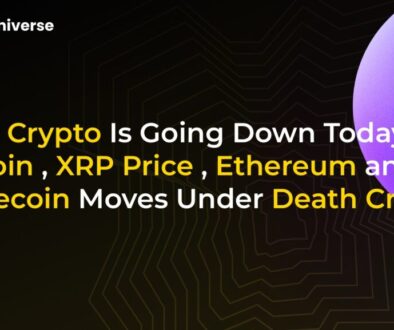Rate Cut Momentum Fuels Crypto Gains Before Volatility Returns

A Tale of Two Markets: From Steady Gains to a Historic Crash
The crypto market in late 2025 has been a textbook example of its dual nature: a sophisticated asset class increasingly tied to global macroeconomics, yet still prone to its own unique brand of explosive volatility. September saw a confident rally as investors cheered the U.S. Federal Reserve’s decision to cut interest rates, only for October to deliver the largest liquidation event in crypto history. This period of extremes highlights a market in transition, where institutional growth collides with breathtaking risk.
Let’s unpack the events that led from a calm, policy-driven climb to a sudden, chaotic freefall, and explore the signs of long-term strength that persist beneath the surface.
The Calm Before the Storm: How a Fed Rate Cut Fueled a September Rally
Crypto markets spent most of September on a steady upward trajectory, driven by positive macroeconomic signals. The main catalyst was the Federal Reserve’s anticipated 25 basis point rate cut on September 18, which lowered the policy range to 4.00–4.25%. This move signaled easier monetary policy, improving liquidity conditions for both traditional and digital asset markets.
With borrowing costs for cash and stablecoins easing, investors felt more confident rotating capital into riskier assets. The market responded in kind:
- Bitcoin (BTC) climbed from approximately $109,000 to a peak of $117,000.
- Ethereum (ETH) rose from $4,300 to $4,600 before a slight correction.
- Solana (SOL) was a standout performer, gaining over 10% to reach the mid-$240s amid strong ecosystem growth.
A look at the derivatives market showed that while there was a healthy appetite for leverage, it remained balanced and disciplined. Funding rates for perpetual futures were stable, suggesting the rally wasn’t driven by excessive speculation. The market felt healthy, stable, and ready for a constructive fourth quarter. That stability, however, was about to be shattered.
The October Shockwave: Inside Crypto’s Largest-Ever Liquidation Event
On the night of Friday, October 10, the market’s calm was violently disrupted. A macro shock—President Trump’s announcement of potential 100% tariffs on Chinese imports—sent risk assets tumbling worldwide. As traditional markets closed for the weekend, liquidity in the 24/7 crypto markets thinned dramatically, creating a perfect storm for a liquidation cascade.
The numbers were staggering. An estimated $20 billion to $40 billion in leveraged positions were forcibly unwound, dwarfing the roughly $10 billion liquidated during the May 2021 crash. The impact was immediate and severe:
- Bitcoin briefly plunged to around $101,000 before recovering.
- Altcoins suffered far worse, with many dropping 30–70% in a matter of hours.
- Yield-generating assets like USDe, bnSOL, and wBETH temporarily lost their peg as the collateral backing them was liquidated into illiquid markets.
The event exposed the different risk management frameworks across the industry. Centralized lenders (CeFi) with human oversight managed to navigate the crash with limited disruption. In contrast, automated systems on exchanges and in DeFi, while transparent, amplified the sell-off through auto-liquidations. These mechanisms, designed to protect protocols, can accelerate price declines during moments of extreme stress. In the aftermath, Binance announced it would provide $283 million in compensation to affected users, a move that underscored both the scale of the event and the role major exchanges play in maintaining market confidence.
Beneath the Volatility: Institutional DeFi Adoption Continues Unabated
While the flash crash dominated headlines, the underlying trend of institutional integration into DeFi not only continued but accelerated. Several key developments in September showed that smart money is looking past short-term volatility and building the financial infrastructure of the future.
PayPal and Spark Fuel PYUSD’s DeFi Expansion
In a landmark move, PayPal partnered with DeFi credit protocol Spark to deploy up to $1 billion of its PYUSD stablecoin into on-chain lending markets. This initiative transforms PYUSD from a simple payments tool into a capital markets instrument, using DeFi to generate yield and deepen liquidity. The partnership leverages Spark’s institutional-grade infrastructure, demonstrating how regulated fintech giants can safely and effectively deploy capital on-chain.
Plasma’s Explosive Launch Signals Massive DeFi Demand
The launch of Plasma in September became one of the year’s biggest liquidity events. The protocol attracted an incredible $6 billion in deposits within its first ten days on Aave, highlighting the immense, untapped demand for innovative stablecoin-driven yield products. This rapid mobilization of capital shows how efficiently the DeFi ecosystem can allocate resources to promising new projects.
Morpho Becomes the Backbone for Institutional Lending
DeFi protocol Morpho solidified its role as a bridge for traditional finance. Crypto.com announced it would integrate Morpho for its on-chain lending products. More significantly, Société Générale’s digital asset arm, SG-Forge, adopted Morpho to facilitate lending and borrowing with its MiCA-compliant stablecoins. This signals a growing comfort among regulated financial institutions to conduct core business activities on public blockchains.
Conclusion: A Market Forged in Fire
The whiplash between September’s calm rally and October’s violent crash serves as a powerful reminder of crypto’s character. The market is maturing, reacting to global monetary policy just like traditional assets. However, as the title suggests, Rate Cut Momentum Fuels Crypto Gains Before
Yet, beneath the chaotic price action, the foundations of a more resilient and sophisticated market are being laid. The unwavering progress in institutional DeFi—from PayPal’s billion-dollar commitment to Société Générale’s on-chain activities—proves that the long-term vision for a decentralized financial system is stronger than ever. For investors, the key is to balance the risks of today with the transformative potential of tomorrow.


